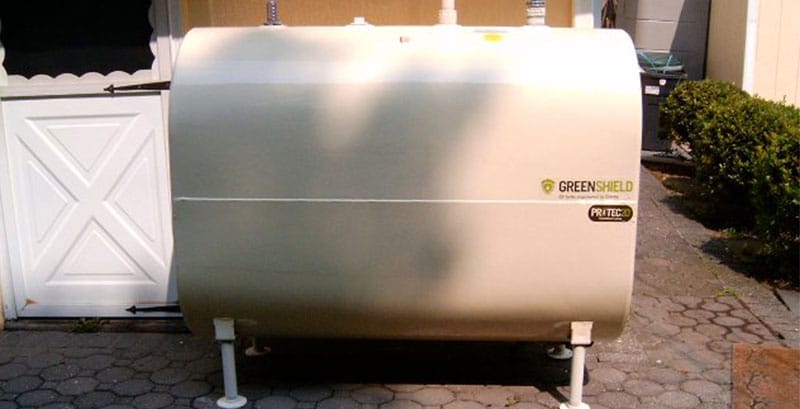As the weather cools, selecting the ideal temperature for your furnace in winter and striking that fine balance between remaining comfortably warm and minimizing your heating bills can be challenging.
This difficulty is exacerbated when you share a living area with individuals who may not share your preferred winter thermostat setting.
The continuous thermostat wars can cause stress and energy waste. Thankfully, we are here to help.
So, what is the ideal winter temperature?
Furnace service professionals recommend that you keep your furnace at 68 Fahrenheit. Heat loss through walls, windows, and doors is a substantial contributor to energy waste in the winter.
Your furnace generates enough warmth at 68 degrees to offset this heat loss. This means you’re efficiently maintaining a pleasant temperature indoors without overheating your home, which would raise your energy use.
Furthermore, research has shown that this temperature achieves the ideal balance of warmth and coolness, satisfying the thermal preferences of the majority of people.
It’s not so cold that you need numerous layers of clothing, but it’s also not so hot that you feel stuffy and uncomfortable.
Other ways to make your house more comfortable in winter
Besides setting your thermostat at the right temperature, you can do several other things to make your furnace function better. These ways include:
Locate your thermostat appropriately
To maximize your efforts, place the thermostat on an inside wall, preferably near the middle of your home.
Because of its strategic placement, the thermostat reflects the entire temperature of your living space.
When doing it, consider the high-traffic rooms, as these are the areas where you want the temperature most conducive to comfort.
To ensure accurate temperature readings, you should avoid the following:
- Spots that have been exposed to direct sunlight
- Placements above air vents
- Kitchens, where cooking heat can cause readings to be skewed
- Hallways, because they may not accurately portray the genuine home temperature
- Proximity to doors or windows which can be drafty and deceptive.
Adjust your thermostat accordingly.
Turning on your thermostat generates heat to combat the chilly air entering the house. The greater the temperature differential between inside and outdoor temperatures, the more difficult it is for your furnace to maintain the desired warmth.
As mentioned, the temperature difference between indoor and outdoor temperatures is modest at 68 degrees, allowing your heating system to run efficiently without undue strain.
Contrary to popular belief, frequent temperature changes or failure to use ideal settings can increase energy expenditures over time.
The proper setting saves energy, but a minor tweak to your thermostat setting can result in even better savings.
You can save up to 10% on your annual heating and cooling costs by lowering the thermostat by 7-10 degrees Fahrenheit for around eight hours daily.
Even with the 68-degree setting, there is space for strategic changes that can result in significant savings. As an example:
Night savings: You require less heat because your body’s activity level is lower in bed. Lowering the thermostat a few degrees at night can save significant energy without sacrificing comfort.
When You’re On Vacation: If you leave your home vacant during the day, lowering the thermostat setting can help you save electricity.
Set your thermostat to adjust the temperature immediately before you arrive, ensuring a pleasant greeting without wasting energy.
Invest in a programmable thermostat.
Modern furnaces are designed to provide comfort while being energy efficient. The idea is to save electricity by lowering the thermostat by 10-12 degrees Fahrenheit (or 6-8 degrees Celsius) at night or when no one is in the house.
While manual adjustments are an option, programmable or “smart” thermostats can be your energy efficiency allies, especially when you’re away from home.
A programmable or smart thermostat can change temperatures based on your schedule and whether you are home or away.
This makes your work easy as you don’t have to remember to reset your thermostat while out of the house.
Keep your furnace in top shape.
Even if you meticulously change your thermostat settings, your efforts may be for nothing if your furnace is inefficient. Small efforts, such as hiring a furnace repair service Huntington professional to inspect your unit, can help you discover underlying efficiency issues.
Leaky air ducts, insufficient insulation, and clogged filters can all impair the performance of your system.
The heating professional you hire should carefully inspect the unit and fix any issues that might be present.
If you’re considering upgrading your system, consider that Energy Star-certified systems with high SEER, AFUE, or HSPF ratings can increase efficiency by up to 15% over earlier versions.
One vital but often forgotten task many homeowners do is replace their air filters. Like air conditioners, air filters in furnaces and other heating systems keep your HVAC system free of dirt and particles and extend its longevity.
Air filter replacement is one of the most crucial maintenance tasks that you should undertake to ensure that your unit functions optimally.
Make it a practice to replace your filters every 1-3 months, depending on the type of filters you use and the environment in your area. You should note that a dry, dusty climate may necessitate more filter maintenance than other regions.
When buying a new air filter, you should look for MERV rating. Each air filter is given a MERV rating for Minimum Efficiency Reporting Value.
The MERV rating ranges from 1 to 16, indicating how well your filter catches airborne particles. The higher the rating, the better the filter and how well your unit will work.
While you should go for an air filter with a high rating, you should note that an air filter with an excessively high MERV rating can limit airflow.
Besides keeping your furnace in top shape, you should consider replacing your unit with a better one. If your furnace is old and has been breaking down too often, you should consider getting a higher efficiency one with a higher energy star rating.

